Jaipur… experiencing The Pink City of India
Perched on the edge of the Thar Desert and fringed by the Aravalli Hills, Jaipur is an architectural wonder, home to some of India’s most ornate buildings – honeycombed palaces, towering forts and elaborate structures designed hundreds of years ago, that still captivate visitors today.
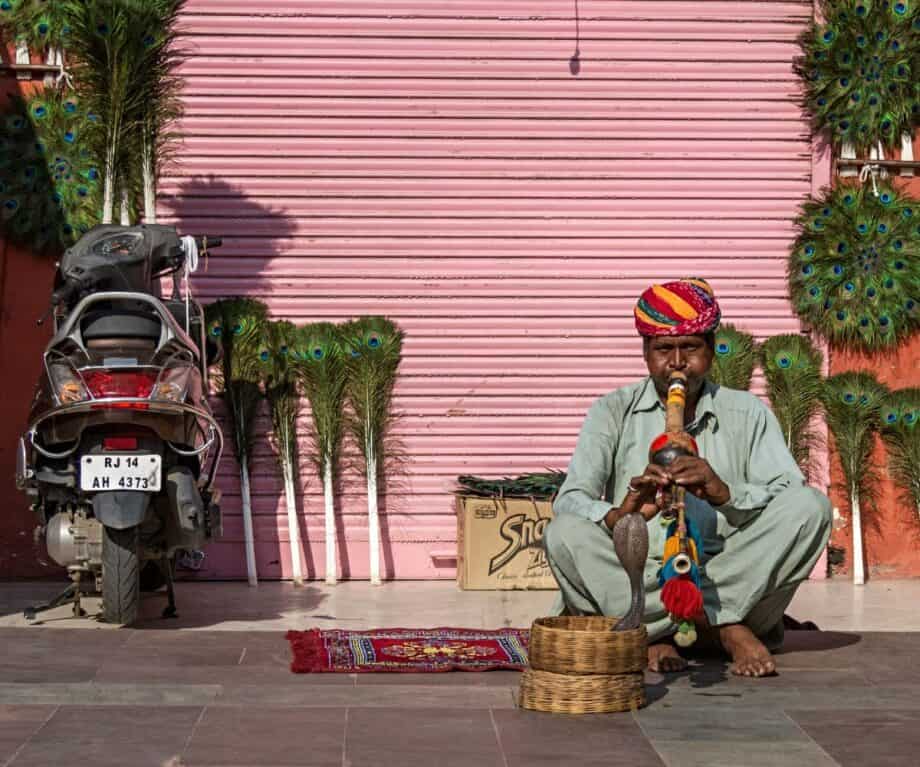

Pretty in pink
Jaipur is the capital of Rajasthan and the pink jewel in its crown. Jaipur may well be one of India’s architectural marvels, but it’s not just the size and splendour of the buildings that makes it a special, it’s the colour scheme too. Buildings everywhere in Jaipur are coloured various romantic shades of dusty pink. Why? In 1876, Queen Victoria’s son, Albert Edward, Prince of Wales (who’d later become King Edward VII) visited India. At the time, pink was the symbolic colour of hospitality, so the whole city was painted pink to welcome the royals. It’s said Prince Albert nicknamed Jaipur the ‘Pink City’ and the name stuck. In 1877 Maharaja Ram Singh took the pink obsession even further. When his Queen declared herself a fan of the colour he passed a law that any new buildings in the city must be painted the same colour. The law has remained and almost all buildings, from bazaars to temples, are painted shades of pink, ranging from pastel pink to dusty rose, reddish brown, gerua, ochre and terracotta.
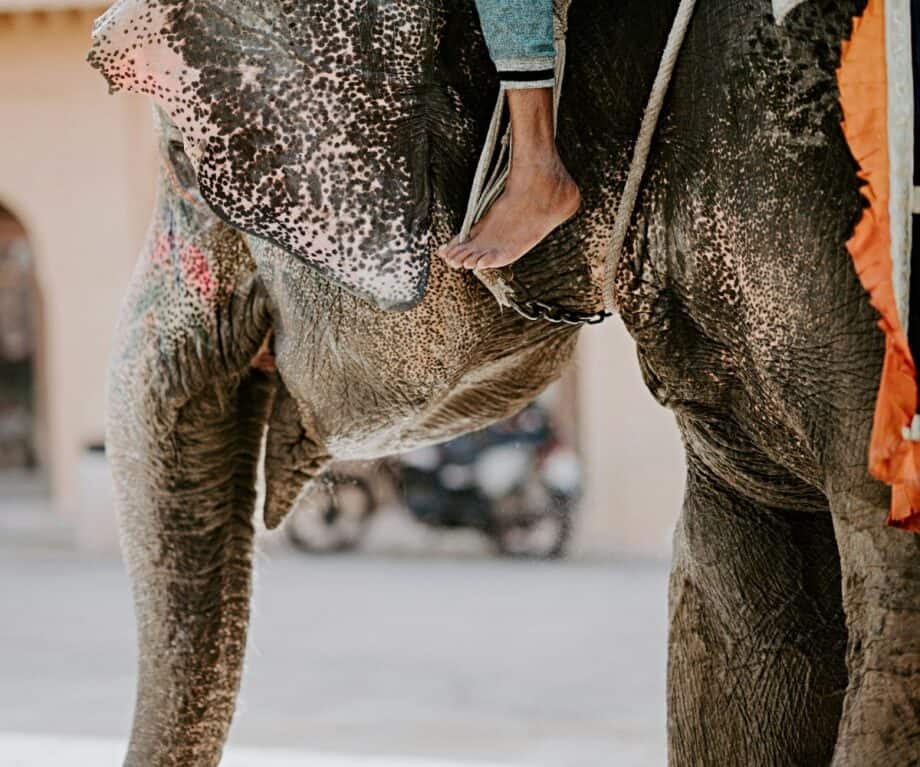
What to see in Jaipur…
Jaipur, the vibrant capital city of Rajasthan, offers a kaleidoscope of experiences that blend its rich history, majestic architecture, and vibrant culture. Begin your journey exploring the iconic Amber Fort, an architectural marvel in the Aravalli Hills, follow that with a visit to the City Palace, a captivating blend of Rajput and Mughal architecture. Marvel at the Hawa Mahal, or ‘Palace of Winds’, with its ornate facade, embodying Jaipur’s royal heritage. Delve into the city’s cultural history at the Albert Hall Museum, before concluding your Jaipur odyssey with a visit to the majestic Jal Mahal, a serene retreat amidst the city’s hustle and bustle.
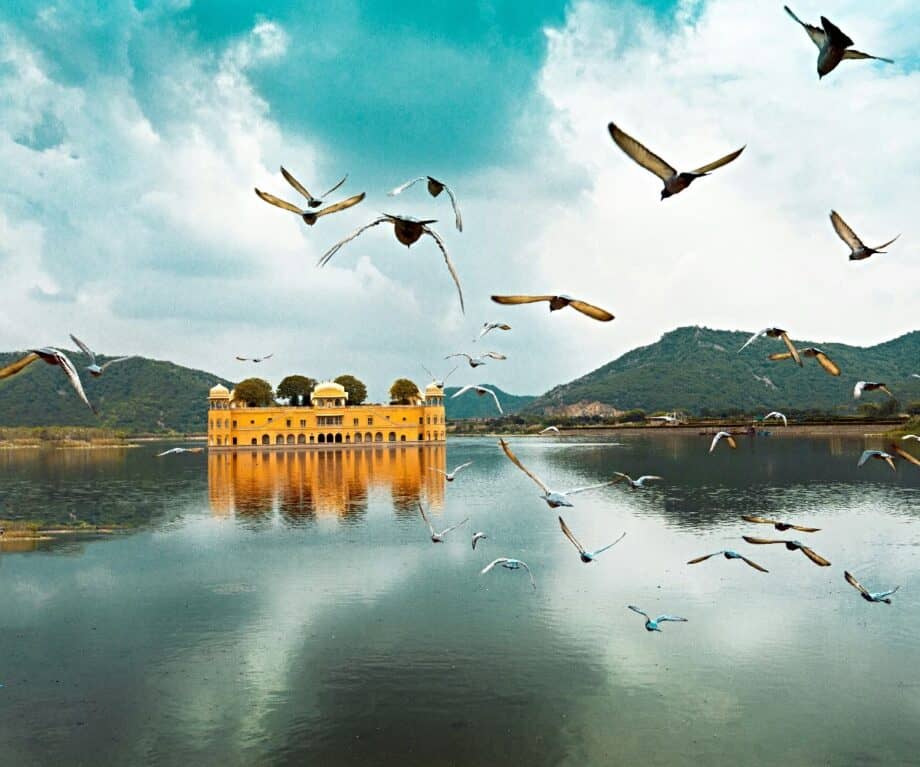
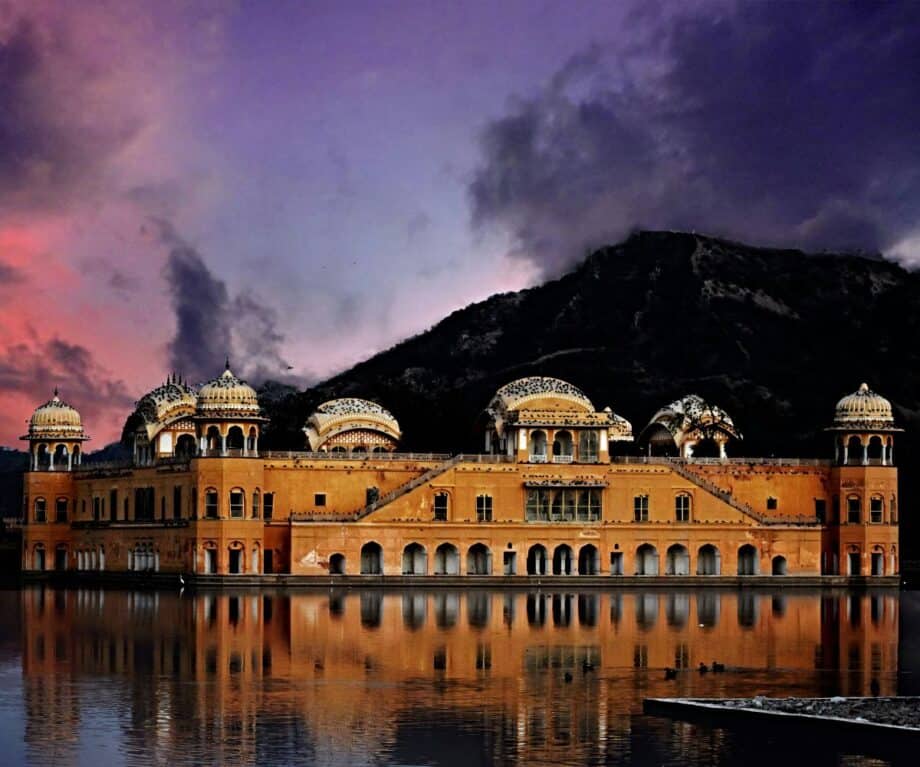
The Jal Mahal
In the middle of Man Sagar Lake, the Jal Mahal, or Winter Palace, is an archaeological wonder. When the lake is full, four of its five stories are submerged underwater, while the top floor seems to float on the surface of the lake. Constructed in 1745, the palace combines Rajput and Mughal architectural traditions. Entry to the palace is restricted, so you’ll have to content yourself with views from the lake’s edge. I’d recommend visiting towards sunset, both for the views of the palace, but also for the picturesque Aravalli Mountains, whose hills are dotted with forts and old temples. The Jal Mahal is located on the outskirts of Jaipur en route to the Amber Fort.
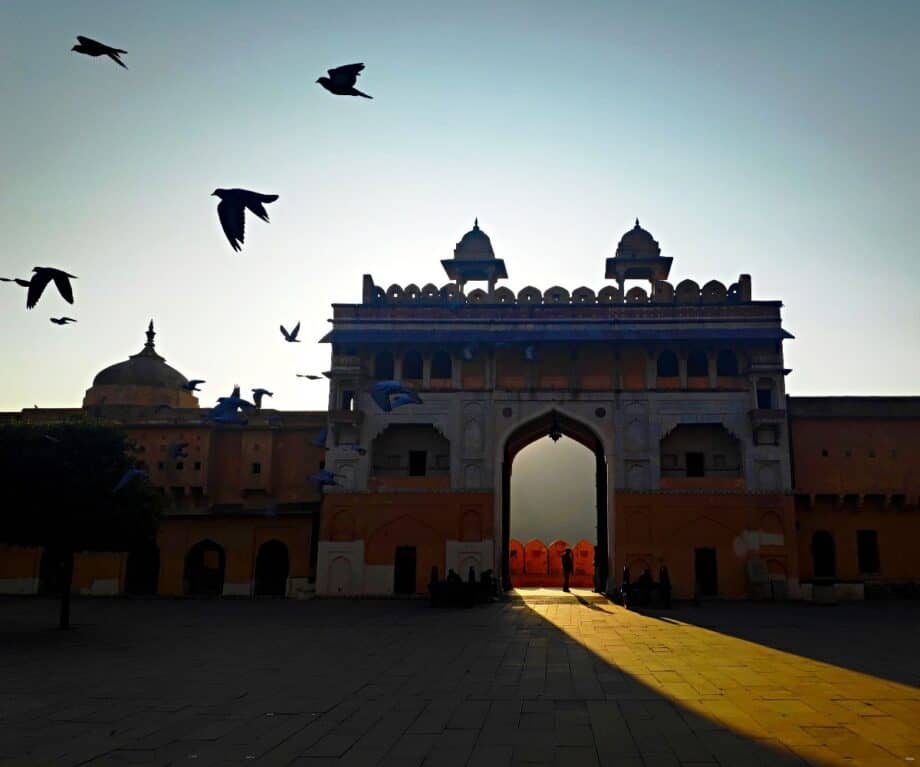
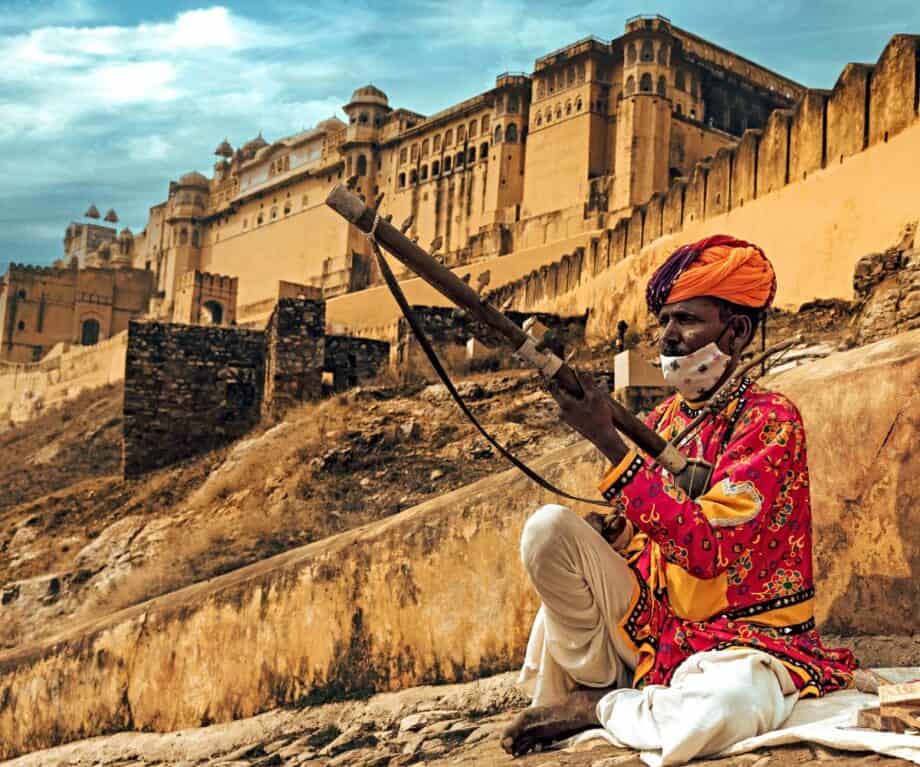
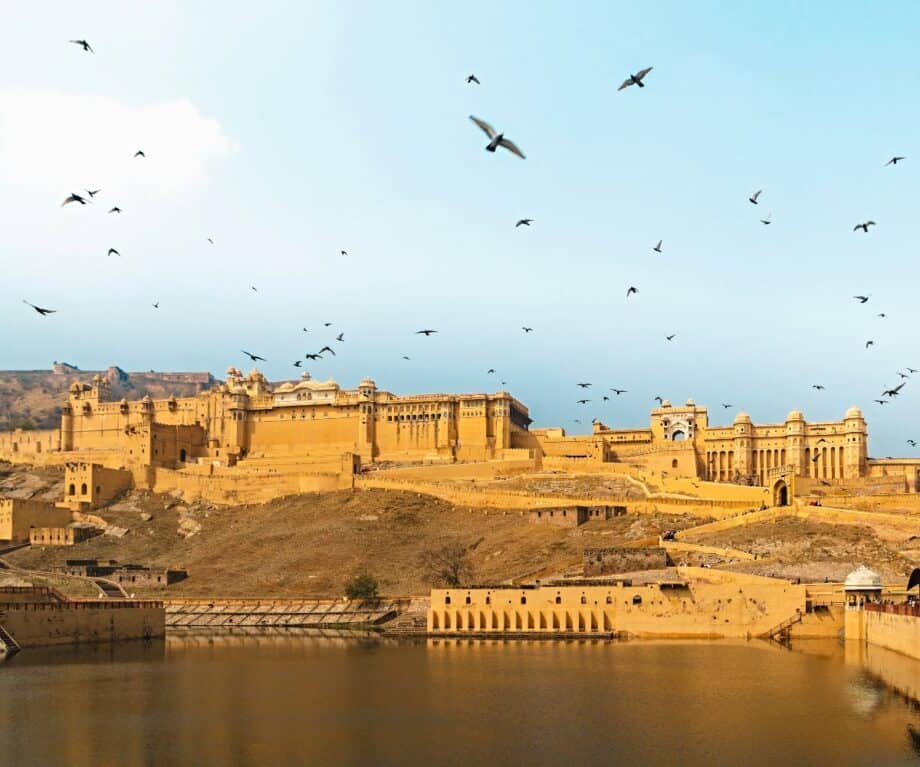
The Amber Fort
Amber Fort (sometimes referred to as the Amer Fort) is on the outskirts of Jaipur, in the rugged Aravalli Hills, 13km from the city centre. The spectacular complex is built on a hilltop. Construction began in 1592 and the fort has seen numerous modifications over time, with successive rulers adding their own personal touches to it over the years. Intricate murals, frescoes and paintings give an ageless beauty to the place and don’t miss the dazzling Sheesh Mahal (Palace of Mirrors), where the walls and ceiling are covered in mirrors, mosaics, and ornate flower carvings. The king at the time had it built so his Maharani (queen) could ‘stargaze’ whenever she desired – Maharanis weren’t permitted to sleep outdoors, so the light from a single candle, reflected in the mirrors, gave the illusion of thousands of stars.

A 20-minute elephant ride uphill from the car park to the Amber Fort is a popular activity, though I personally found it underwhelming and, with hindsight, ethically questionable.
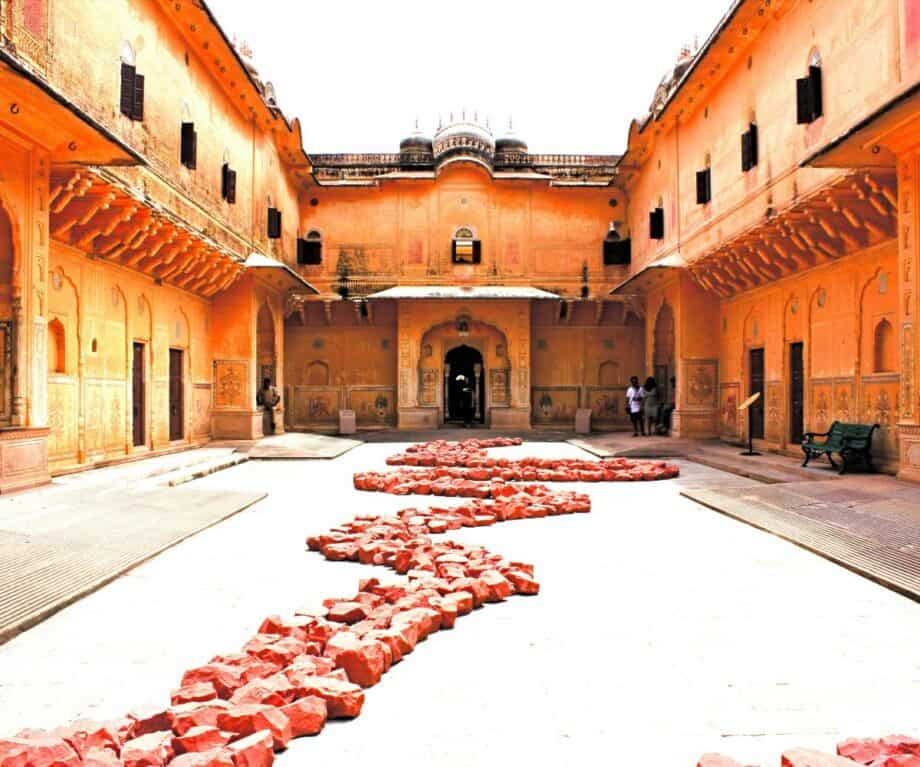
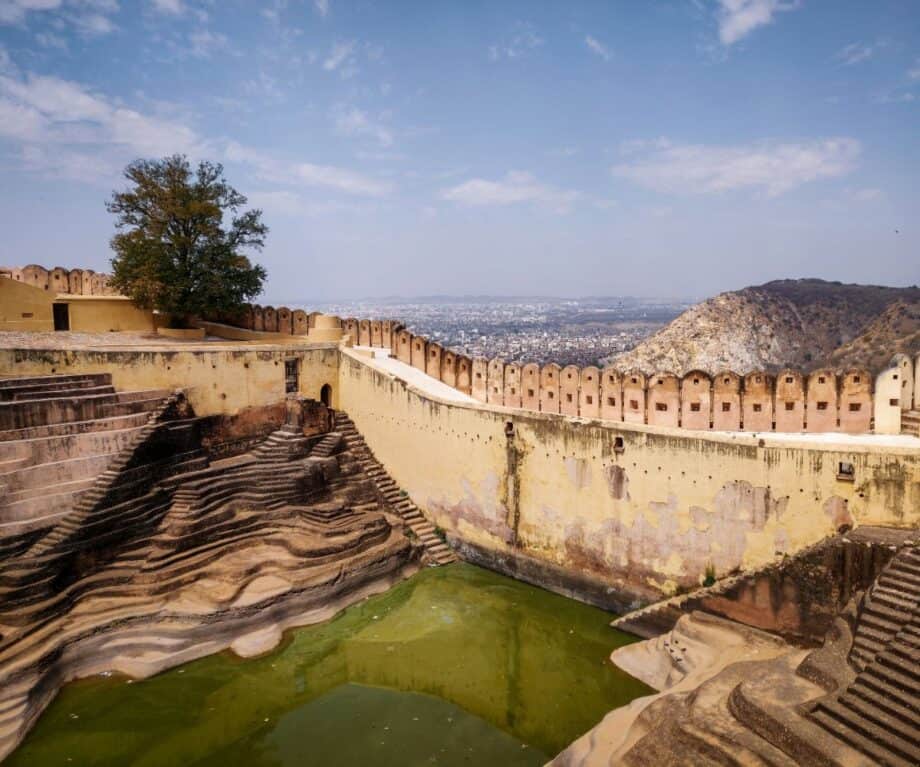
Nahargarh Fort
Nahargarh Fort is one of the three major forts that once formed a defensive ring around Jaipur, the others being Amber (see above) and Jaigarh (which we’ll cover next). Constructed in 1734, Nahargarh’s fortifying walls connected it to Jaigarh Fort, and the fort has the best views over Jaipur. Originally named Sudarshangarh, its name was later changed to Nahargarh, meaning ‘Abode of Tigers’.

Nahargarh never actually came under attack, and its famed guns were only ever being fired to mark the passing of hours. This isn’t only a military building, there’s also a zenana (part of a Hindu or Muslim household reserved for women) for the royal women, which is one of the most beautiful buildings in the complex. A dozen identical suites, with frescoed hallways connecting them, the zenana was constructed in such a way that the king could visit any of his queens without the others knowing!
You can cycle or hike up to the fort, and you should aim to coincide your visit with sunset when the city below is bathed orange and the pink buildings seem to glow like embers.


Jaigarh Fort
Jaigarh Fort is the third of the imposing forts that overlook the city. 400m above Amber, Jaigarh was constructed in 1726 with its primary aim being to protect the lower fort. A hidden subterranean tunnel connects the two forts, and despite the distance between them, they are generally considered part of one fort complex (sadly there’s no access to the tunnel nowadays).
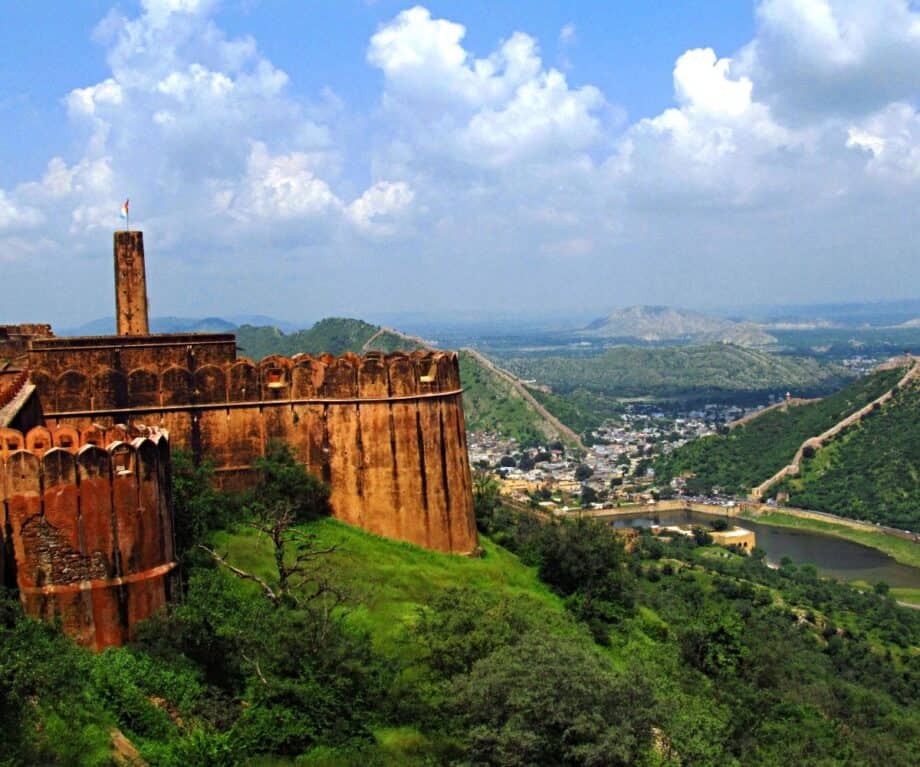
Jaigarh houses the world’s largest cannon on wheels, the ‘Jaivana Cannon’, mounted on roller-pin bearings on four wheels, helping it turn 360 degrees and fire in any direction. Jaigarh was never invaded and Jaivana was only used once, to test its firing capabilities.
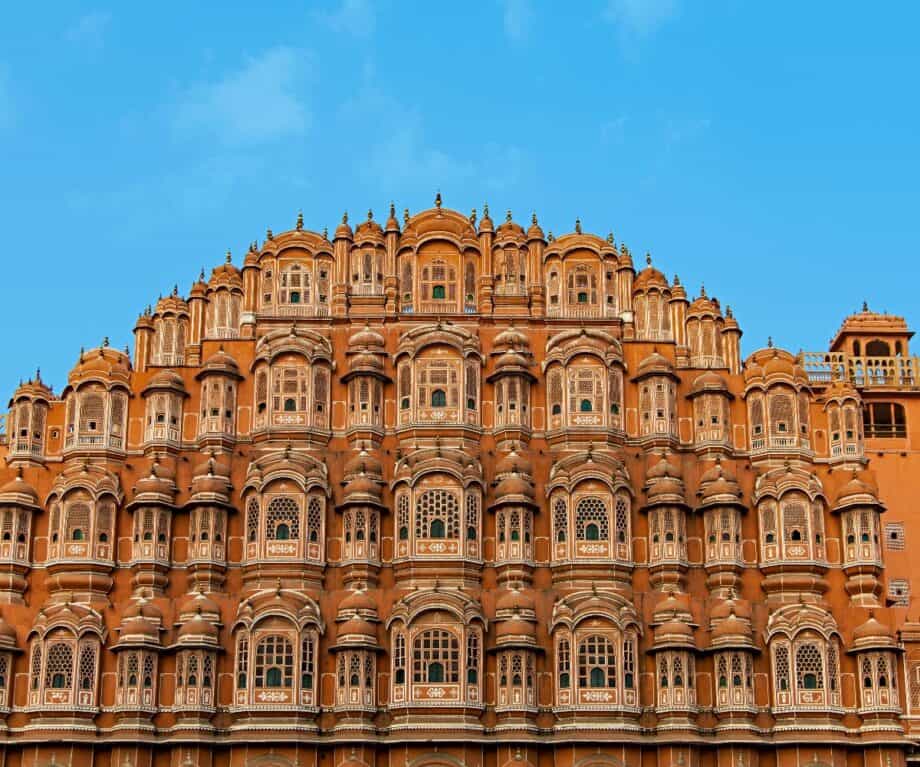

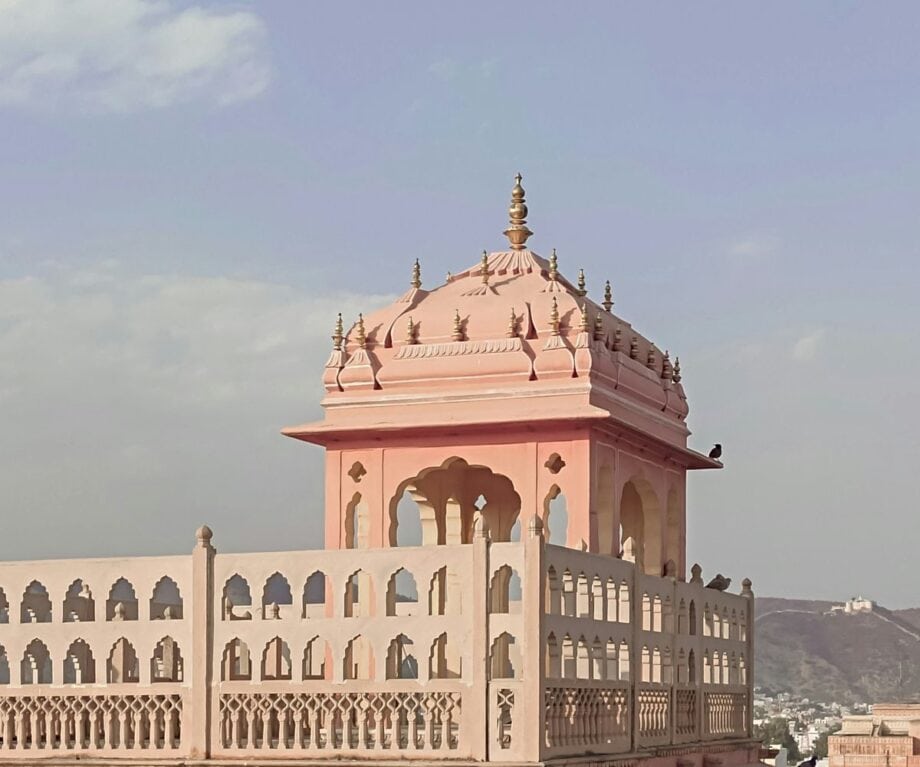
The Hawa Mahal
The most famous and iconic landmark of Jaipur, the Hawa Mahal was designed for the royal ladies to watch everyday life and festivals outside on the streets, without being seen by the public, through a lattice of 953 small windows (jharokhas) adorned with elaborate latticework. The latticework also served to allow the breeze to pass through, working like a natural air-conditioner. This five-storey, crown-shaped building, also known as the Palace of the Winds, was built in 1798.
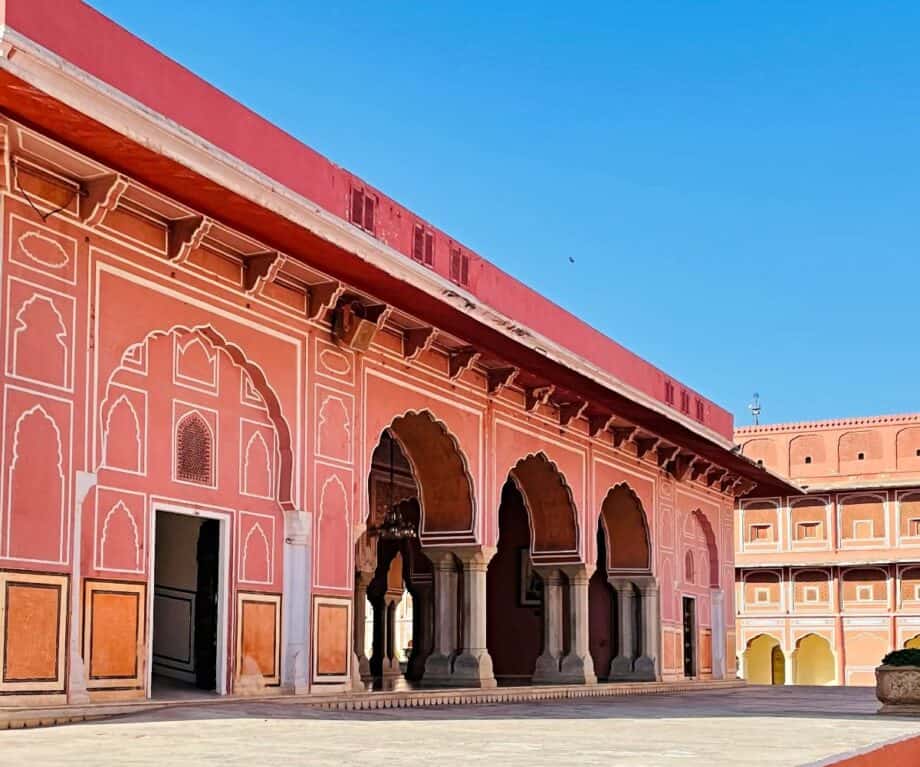
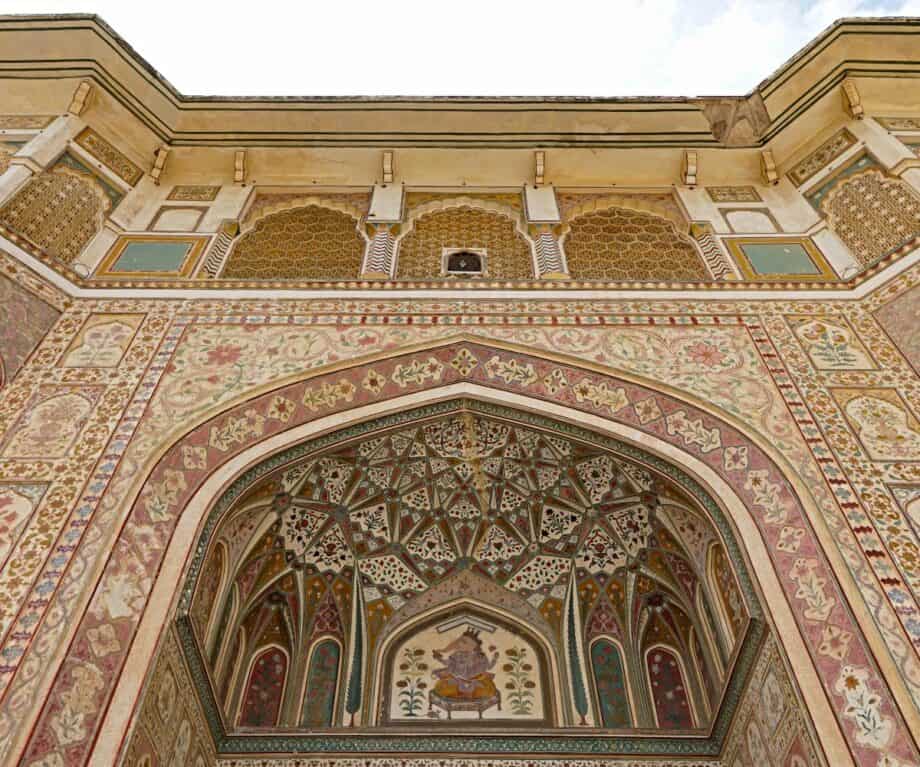
The City Palace
Right next to Hawa Mahal is the City Palace, protected by enormous walls. Construction was completed in 1732 and the palace served as the seat of power for the Maharaja of Jaipur. To this day parts of the City Palace are home to the royal family of Jaipur and are out of bounds to tourists. The palace has four entrances: Udai Pol, Jaleb Chowk, Tripolia Gate, and Virendra Pol and with its decorated courtyards, gardens, temples and halls the City Palace is a real treasure to explore.

There’s also a museum at the City Palace which displays an array of royal costumes and weaponry.
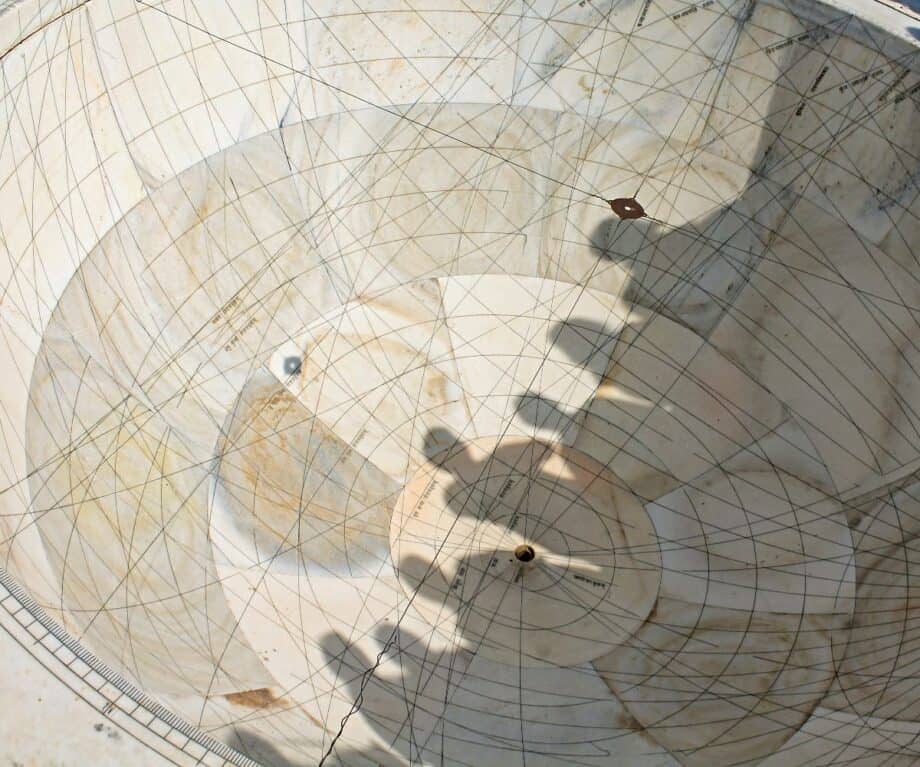
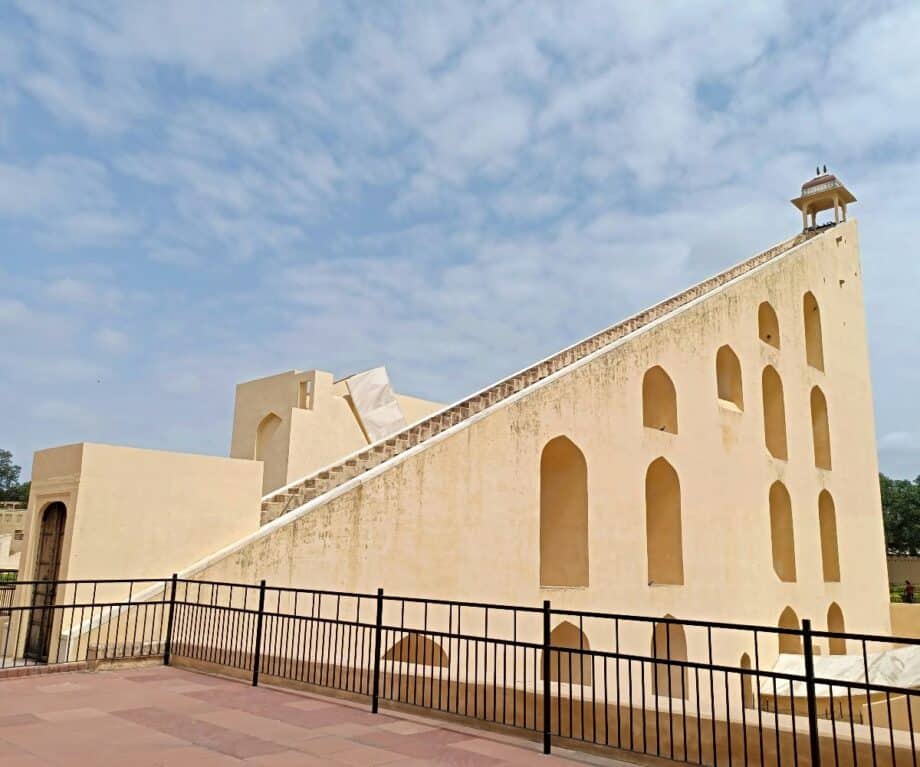
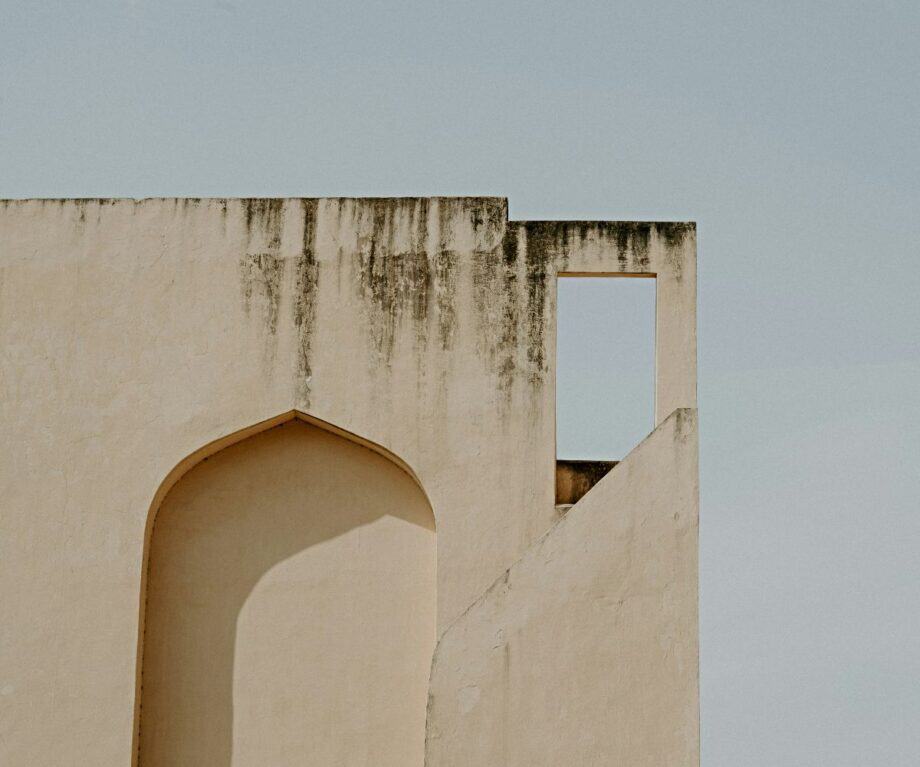
The Jantar Mantar
If astronomy interests you, Jantar Mantar, a UNESCO World Heritage Site, just a stone’s throw from City Palace and Hawa Mahal, should be on your list to visit in Jaipur. Jantar Mantar is one of five observatories constructed by Jai Singh II (the other remaining ones are in Ujjain, Delhi and Varanasi). Among the array of instruments here is the world’s biggest sundial, as well as various contraptions made of stone and brass – in all, there are 19 astronomical devices.
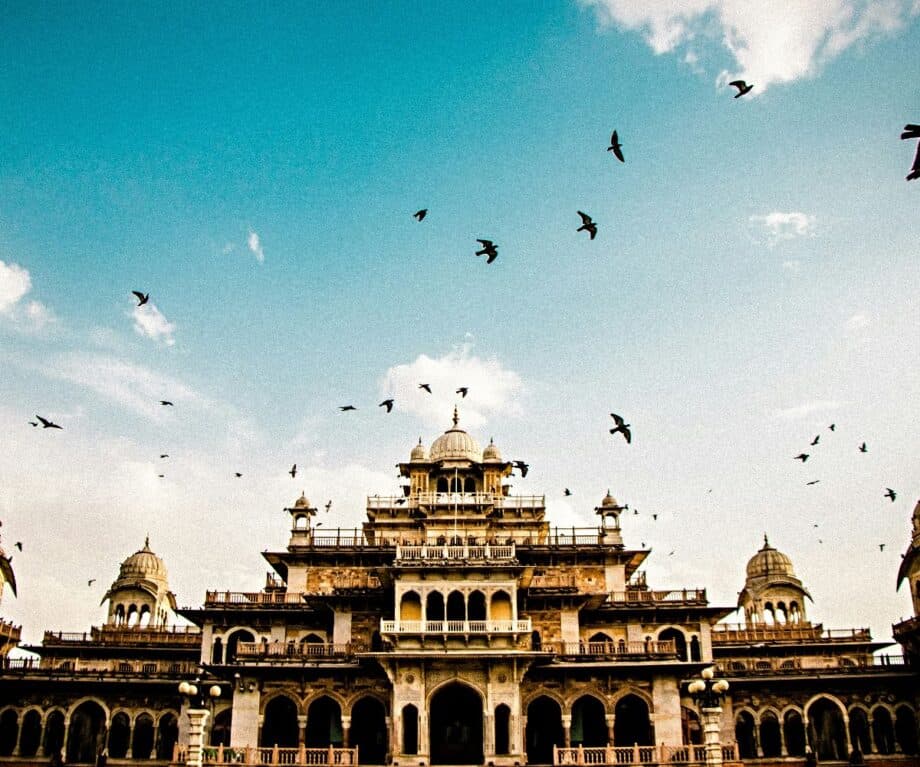
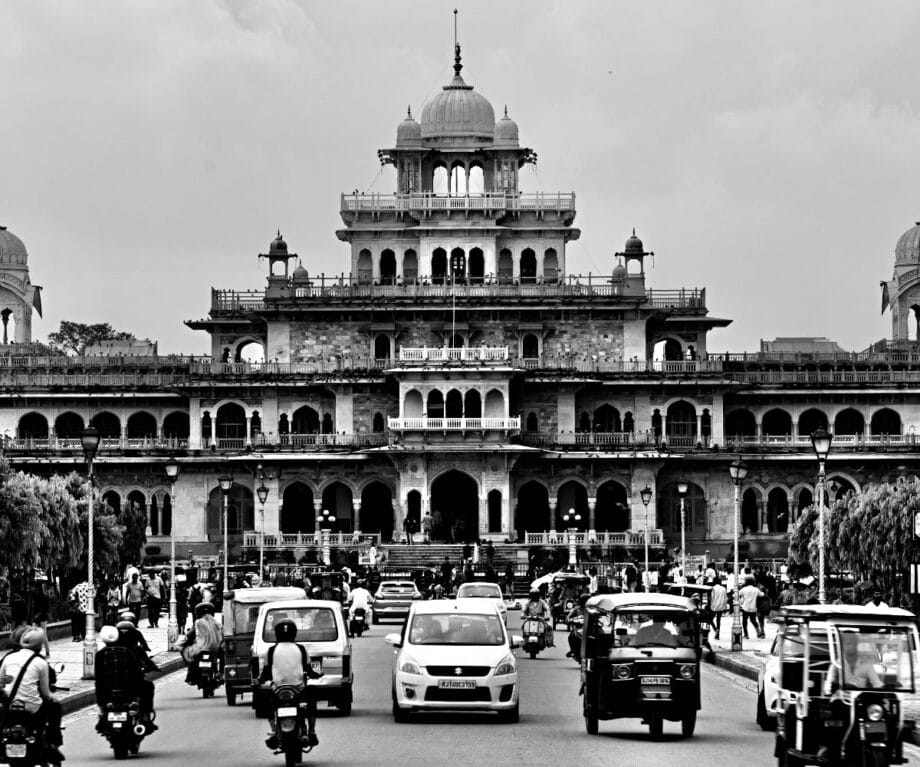
Albert Hall Museum
Palaces and forts aren’t the only historical places to visit in Jaipur. Albert Hall Museum is the oldest museum in Rajasthan, and houses treasures that include paintings, crystal sculptures, jewellery and even an Egyptian Mummy. The museum is located amongst the sprawling Ram Niwas Gardens, on the outskirts of the traditional market area of Jaipur.
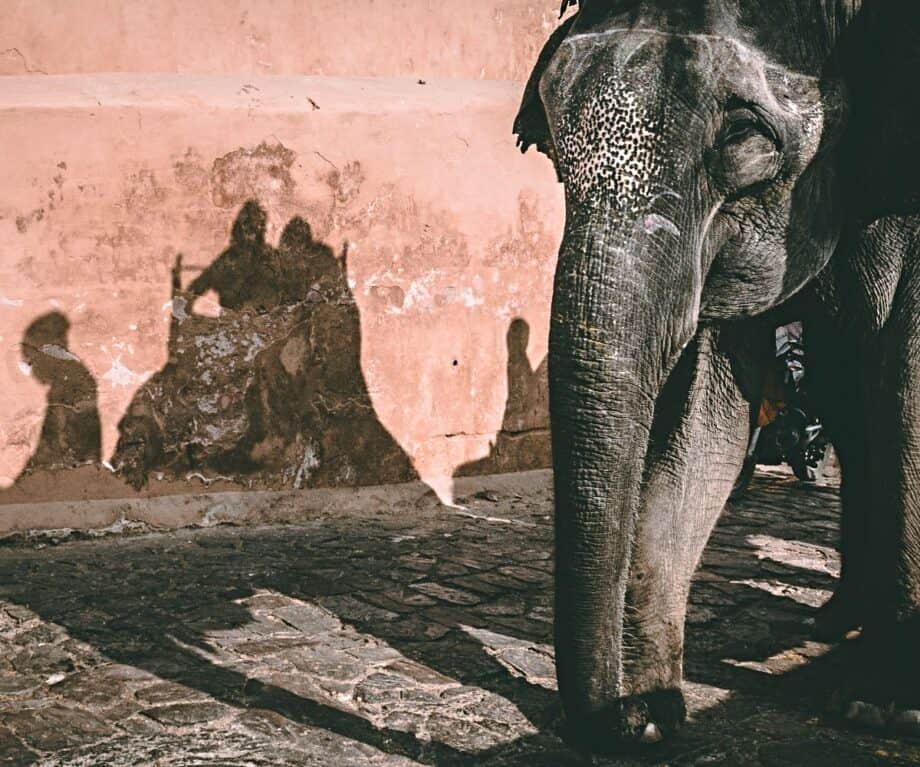
FYI You can get a ‘composite ticket’ that will cover your entrance fees for seven of Jaipur’s major monuments, including Jantar Mantar, Albert Hall, Hawa Mahal, Amber Fort and Nahargarh Fort. It’s available online from the Government of Rajasthan, Archaeology & Museums website or at the booking counters of the individual attractions.

How to see Jaipur…
Embark on an immersive journey through Jaipur. Stroll the city’s enchanting streets, wander the bustling lanes of the old city, stop at local eateries and savour delectable Rajasthani cuisine, joining a guided walking tour to unveil the city’s hidden gems. Immerse yourself in the colours of Jaipur, from the vibrant fabrics adorning to the brilliant turbans worn by locals. Don’t forget to capture the city’s beauty through your lens, be it the silhouette of the Amber Fort against the setting sun, or the intricate details of the Hawa Mahal’s façade. And don’t forget to indulge in Jaipur’s culinary delights!
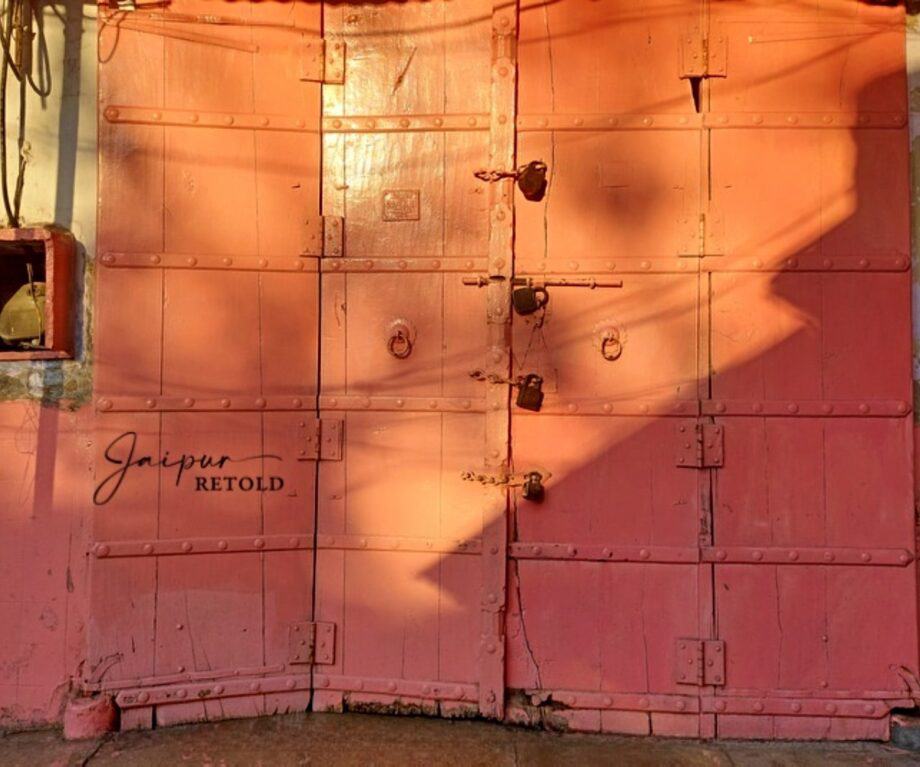
Join a tour or simply wander through its streets – Jaipur promises an tapestry of unforgettable experiences.
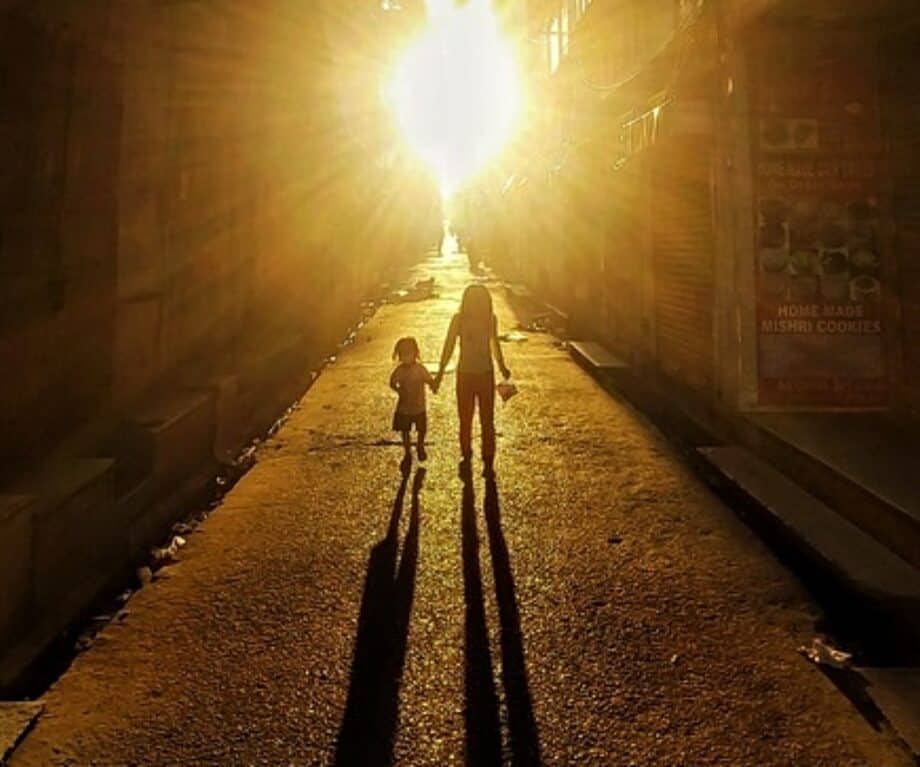
Walk
One of the very best ways to experience Jaipur is on foot. The leisurely-paced Jaipur Retold heritage walking and cycling tours focus on experiencing the history, heritage, and culture of old Jaipur city. Guided by Arvind, for whom Jaipur Retold is a passion project, these well-curated and researched tours are a great way to experience Jaipur, showcased by a local, knowledgeable guide. You can learn more about Jaipur and its stories on Arvind’s terrific blog JaipurThruMyLens.com.

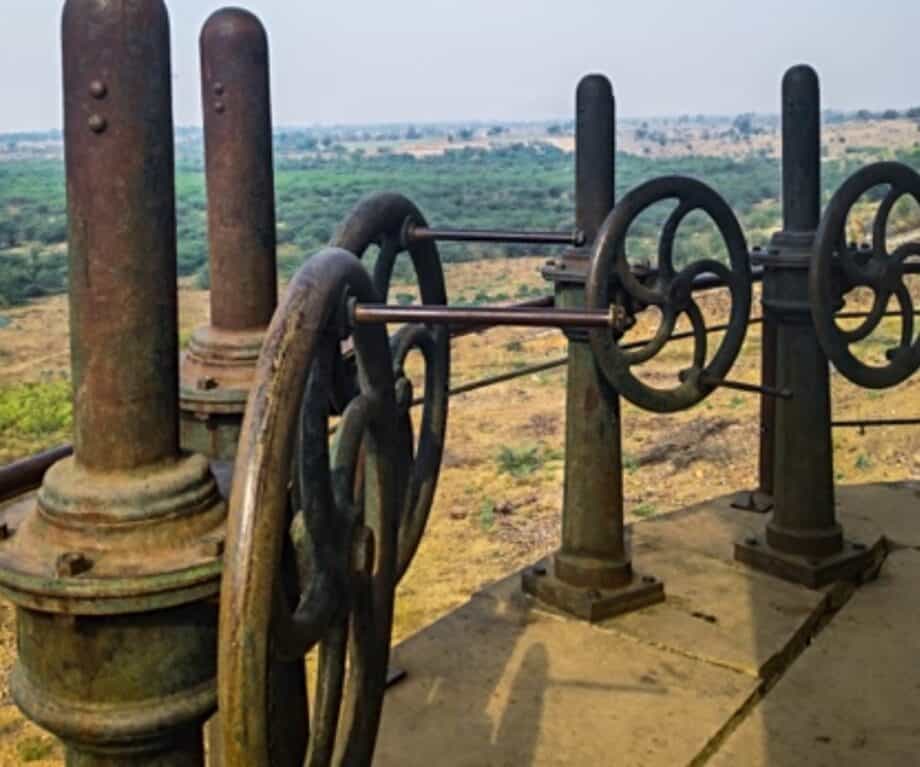
Heritage Water Walks are conducted by Neeraj Doshi. The walks focus on how the unique Rajasthani culture evolved and thrived in a place of sand dunes. If you enjoy walking and exploring then these 2-hour curated tours are perfect. Armed with rare photos and documents, you’ll time-travel into Jaipur’s past, walking old lanes, exploring buildings and covering a range of themes from history, architecture and engineering, to local traditions and beliefs, politics, intrigue, and even sampling some local foods. (Heritage Water Walks is rated #1 out of 351 outdoor activities in Jaipur.)
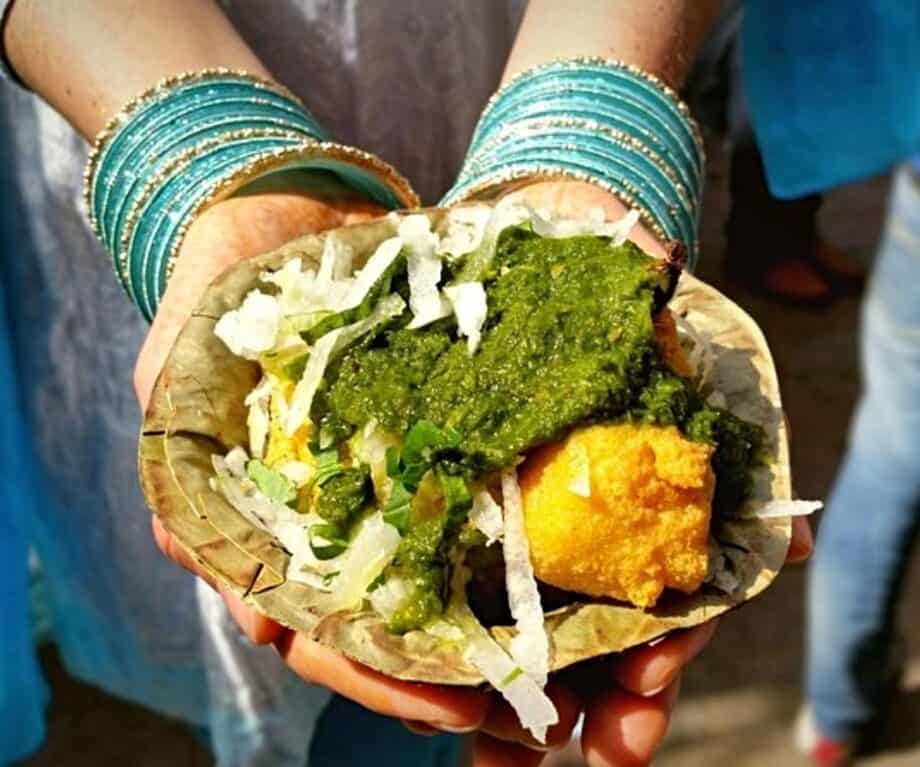

Eat (Rajasthani cuisine)
Thanks to its rich culinary tradition Jaipur is a foodie’s delight. Dishes cover the entire spectrum, from very sweet to very spicy, and everything in between.
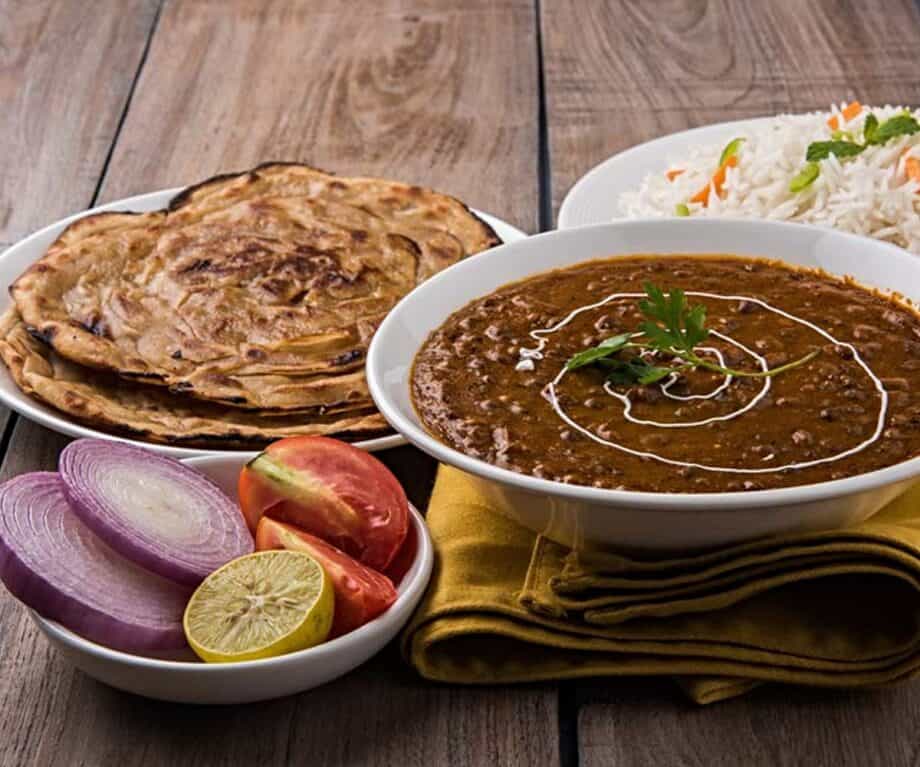
For great local cuisine at affordable prices try Thali House, Khandelwal Dhaba Purana Wala has great vegetarian Rajasthani cuisine (try the Khandelwal Special Thali), and Lassiwala which opens at 7.30 am, serves delicious lassis (a yogurt–based beverage with a smoothie-like consistency), there are several imitations along MI Road, so look for the sign that says Shop 312 and ‘Since 1944′. If you’re not on a budget, Cinnamon is one of the most sought-after restaurants in Jaipur, and located inside the Rambagh Palace Hotel is the Polo Bar, adorned with polo memorabilia from the kings and princes of Jaipur – martinis at the Polo Bar are particularly recommended.
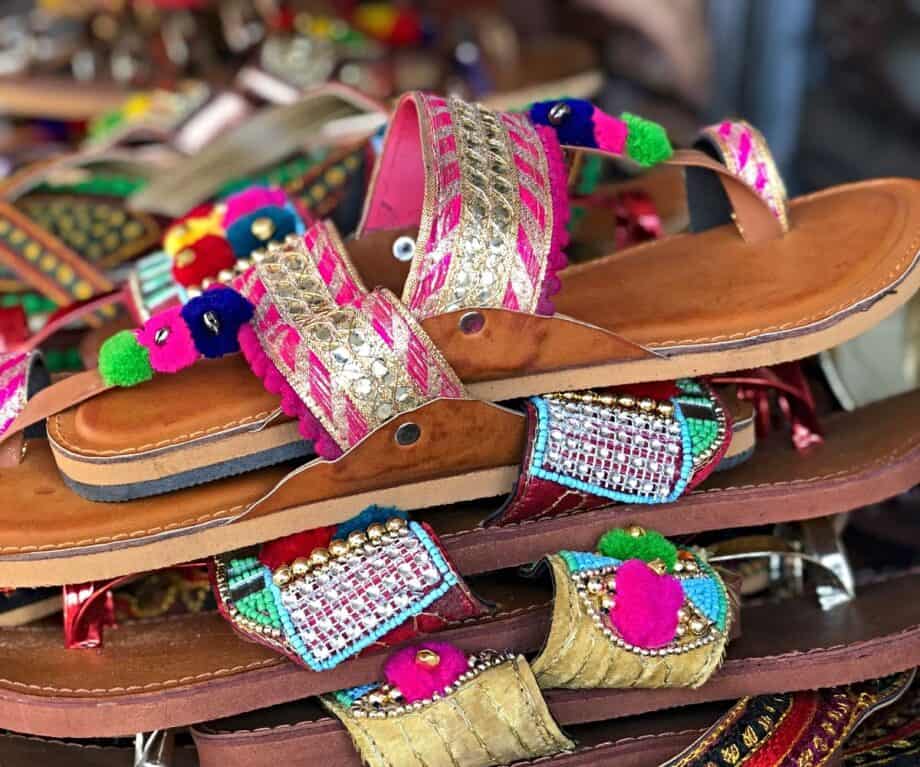
Shop
Jaipur is a shopper’s paradise. The local markets buzz with activity and if you shop too much, the stores will even deliver your purchases to your hotel! The old market is spread out around Hawa Mahal, and divided into quarters, each specialising in specific goods. Bapu Bazaar is the place for saris, fabrics, trinkets and gifts. Kishanpol Bazaar is known for bandhani (tie-dye) work. Nehru Bazaar for fabric, jootis (shoes) and perfumes. Manigaron Ka Rasta is great for bangle shopping. Siredeori and Johari Bazaars house jewellery stores and are particularly known for meenakari jewellery, a Jaipur speciality.

Rajasthali Government Handicraft Emporium is a state emporium selling all things Rajasthan – embroidery to pottery, woodwork to puppets, brassware to bandhani. It’s a great place to shop if you’re in a hurry, otherwise visit here to gauge prices, before venturing into the bazaars where you’ll find a larger variety and, if you bargain well, often at a better price. One of my favourite stores, Anokhi, sells great block-printed fabrics, bed covers and clothing. Another, Fabindia, has evolved into a brand name for all things Indian.
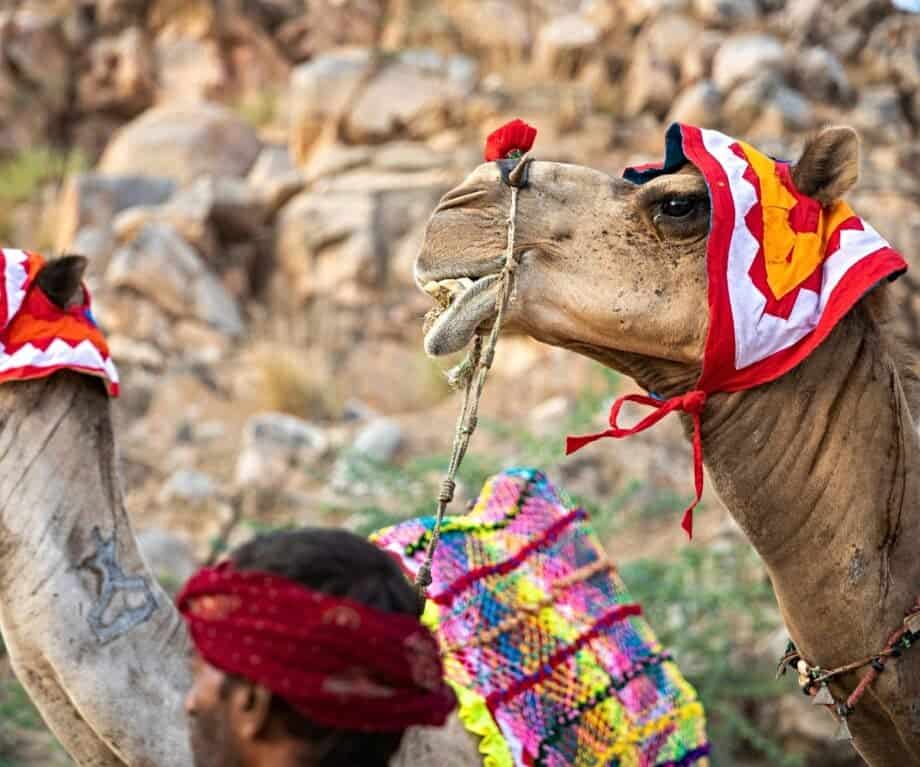
The chaotic MI Road, with camel carts and auto rickshaws, and eateries and shops lining both sides of the street, isn’t your typical luxury store location. But that hasn’t stopped The Gem Palace, which has been here since 1852 and is one of the country’s leading jewellery stores – they’ve something for all tastes, if not all budgets!

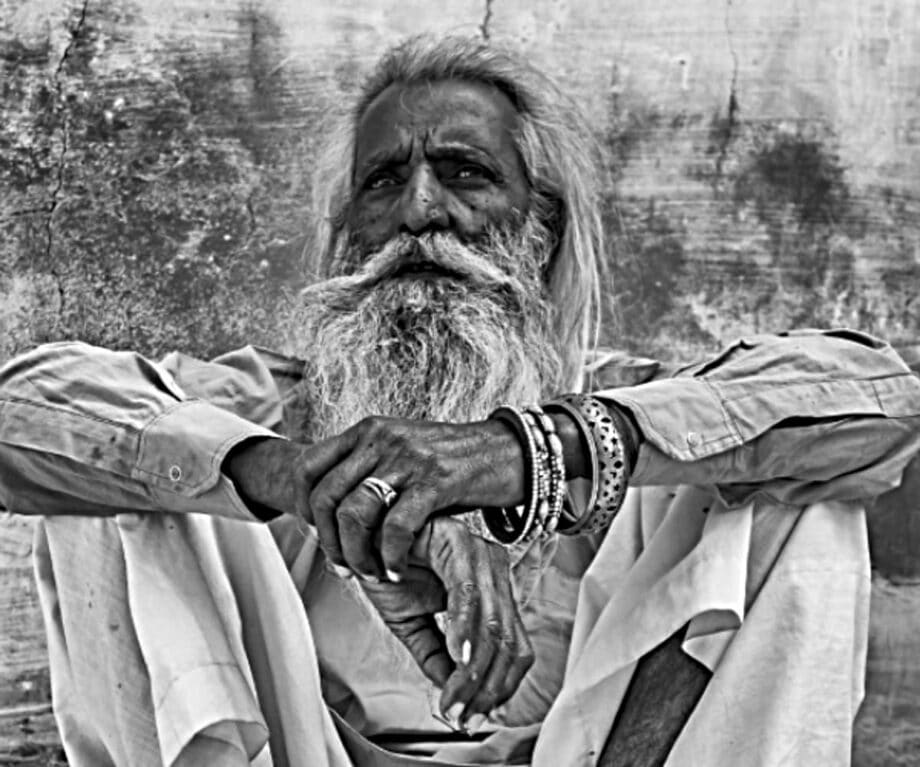
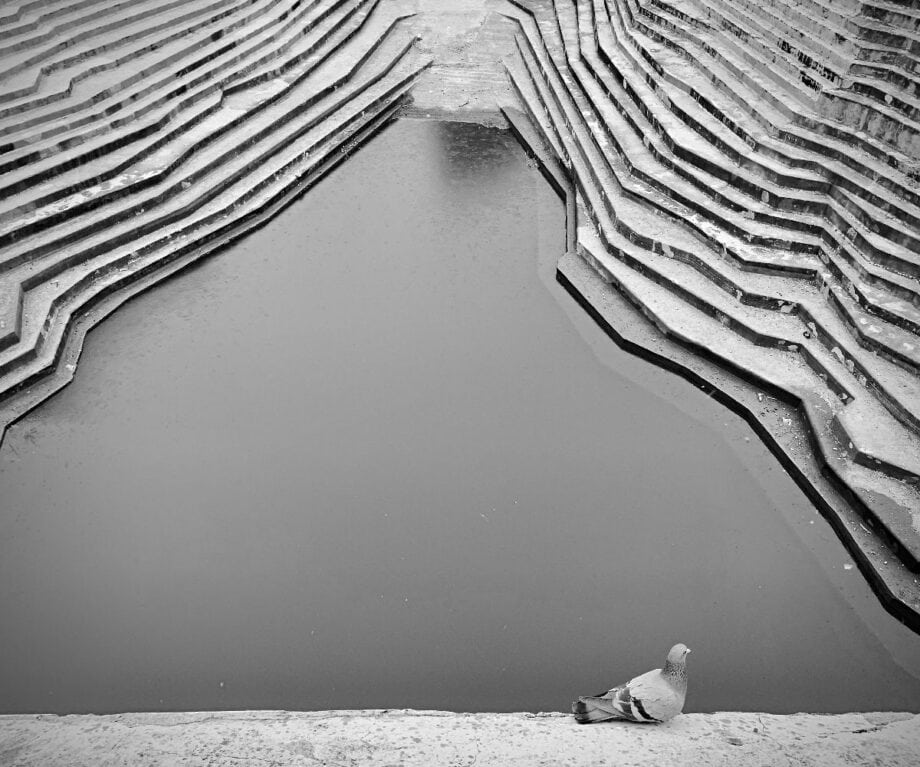
Take photos
With a blend of new-world vibrancy and old-world charm Jaipur is a treat for photography lovers and the perfect place to pursue your passion for the art. Long time friend and Jaipur local, Rajan Bhatt, is a trained architect and an avid photographer, passionate about capturing landscapes and street life all around the world. His award-winning work has featured in numerous exhibitions and he’s the perfect person to give you a real insider’s photography experience of Jaipur.
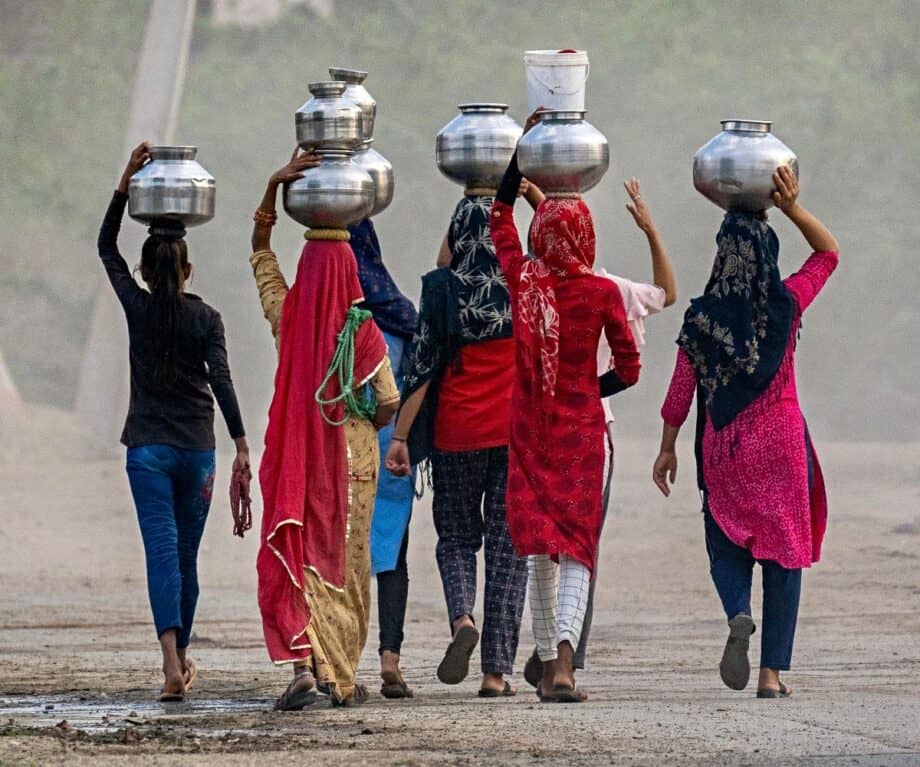
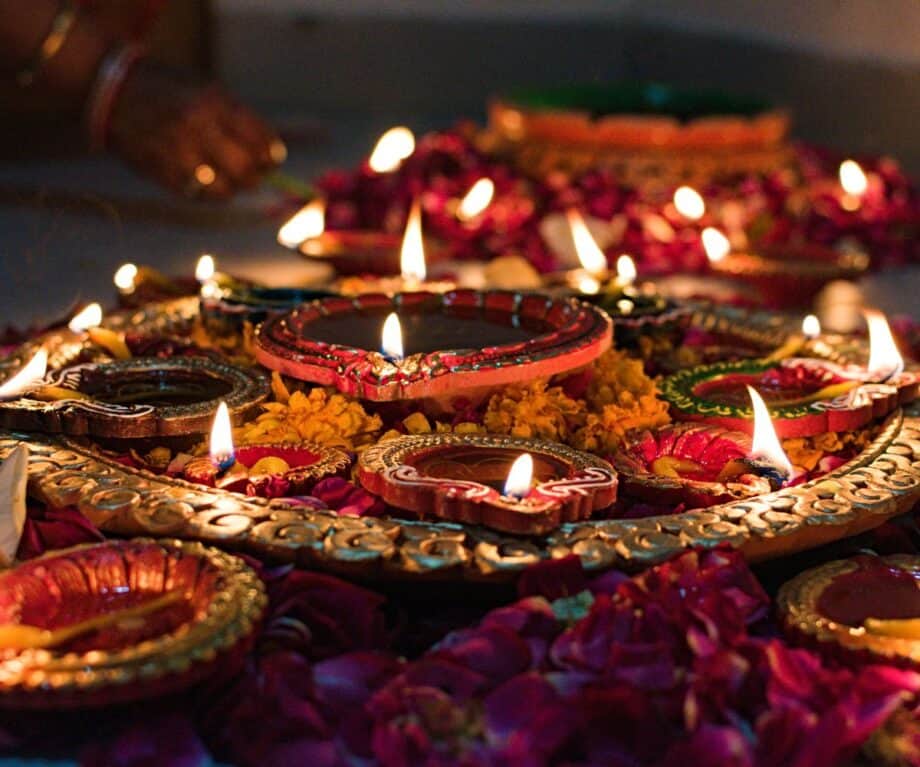
It’s not difficult to fall in love with Jaipur from the moment you arrive. There’s a saying इस जग म आकर या कया जब तक ना दखा जपरया। which translates to ‘Life is not worth living until you visit Jaipur’
Did you enjoy this article?
Receive similar content direct to your inbox.

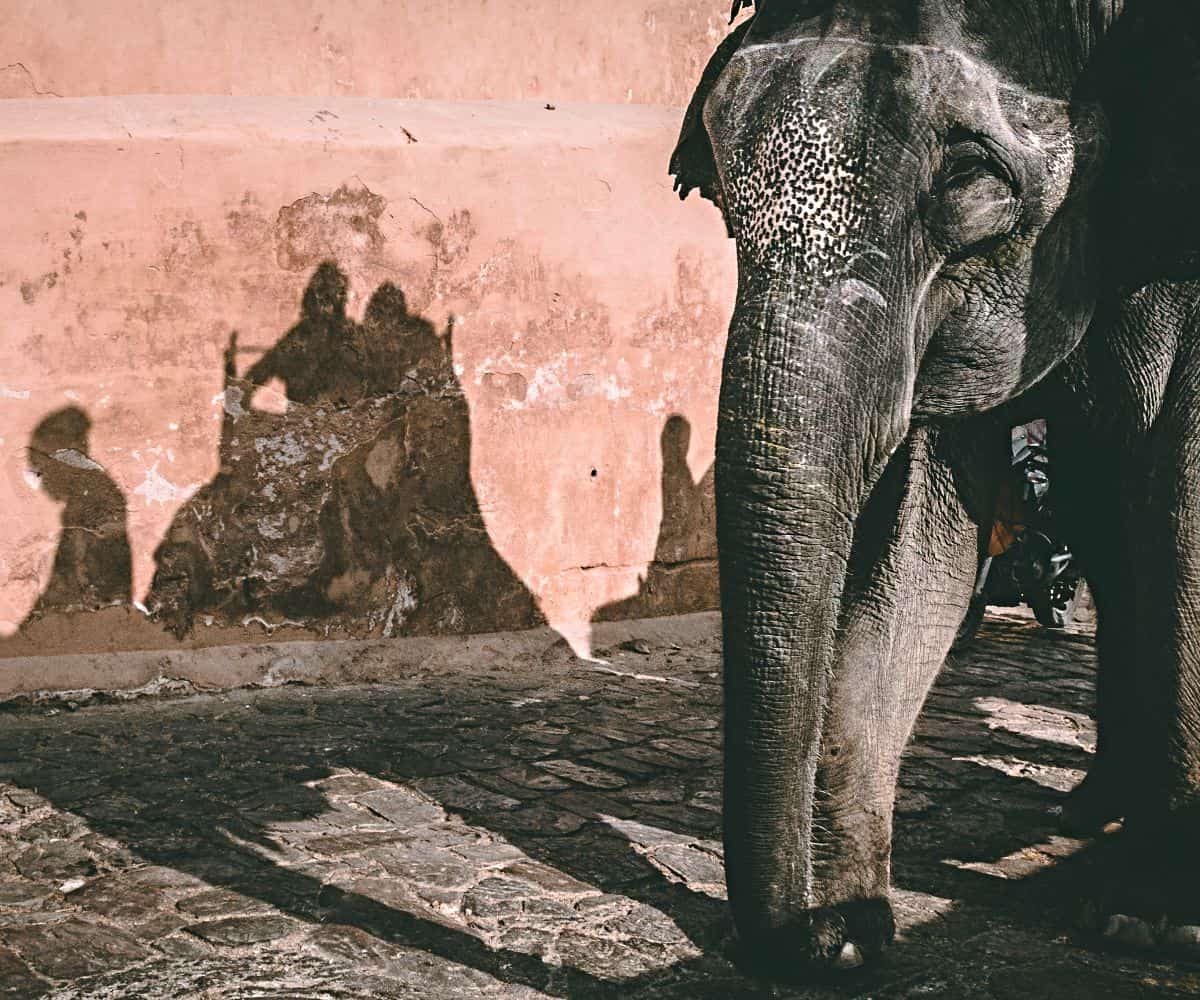

This is a wonderful account from your trip to Jaipur, Sarah! I love the photos… such interesting architecture.
I’ve visited some magical places in India and of all of them Jaipur is my favourite. In fact, it’s so good that I’ve been there twice. And would be very happy to visit for a third time.
Hi Jasper,
Jaipur really is a special spot!
Sarah
I’ve learned more about Jaipur from 10 minutes of reading this fascinating post than I did from being in the city for 3 days.
Hi Kate,
Now you’ve read about it you really should visit. 😊
Sarah
I’d always wondered why Jaipur was known as the pink city and now I know why.
A very informative post and great photos too.
Hi Graham,
Glad you enjoyed it. Jaipur is a great place to visit, and writing about afterwards just reminds you of all the amazing things to see and do.
Sarah
All of my 3 children have been to India and reading about Jaipur has reminded me that it ought to be my turn. It could be 2025 when my long awaited retirement finally becomes a reality. I’ll definitely be dropping into Jaipur.
Hi Peter,
It’s a great place, and really something for all ages. The youth with their back packs and youth hostels, and those looking for a few more creature comforts. It would be a super retirement holiday destination.
Sarah
Useful tip on the composite ticket. By first world standards admission prices in India are usually great value. Any queueing up and messing about with cash that can be saved is always a help when you are travelling, especially in India.